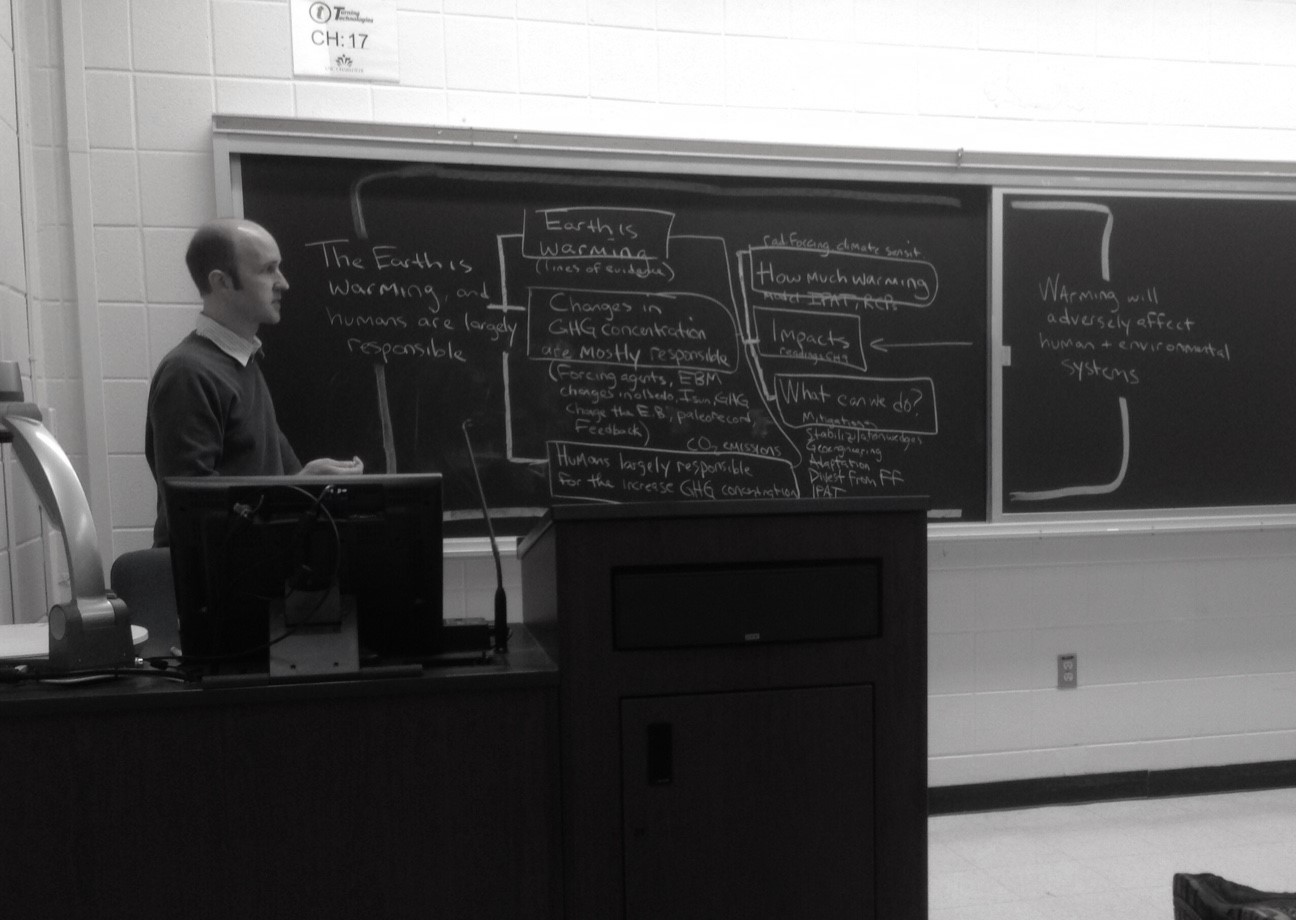
A student sent me a picture he took while taking notes. I love system charts.
I teach a rotation of courses in support of undergraduate and graduate studies in Meteorology and Earth Sciences Programs (Earth and Environmental Sciences BS, Environmental Studies BA) at UNC Charlotte.
My colleagues in the Meteorology Program include Dr. Casey Davenport, Dr. Matt Eastin, Dr. Jack Scheff, Dr. Ian Chang, and Mr. Terry Shirley. The Meteorology Program and the Earth Sciences Programs are part of the Department of Earth, Environmental, and Geographical Sciences which houses research, teaching, and degree programs in meteorology and Earth sciences, and also GIS science, human geography, physical geography, and geological sciences. I teach courses that are centered on atmospheric sciences – see the menus above for My Greatest Hits.